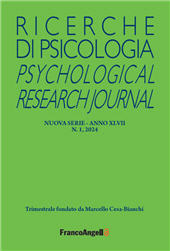L'acquisizione dell'italiano come seconda lingua da parte di bambini con mandarino o arabo come prima lingua
41-55 p.
In questo articolo, discuteremo due aspetti dell'acquisizione bilingue: il meccanismo del transfer e il tempo di esposizione effettiva alla seconda lingua. Il primo consiste nel fatto che una proprietà linguistica acquisita nella prima lingua (L1) possa facilitare l'acquisizione della stessa anche nella seconda lingua (L2). In altri termini, nell'acquisizione della L2, i bambini possono beneficiare dall'aver già imparato proprietà analoghe nella L1. Discuteremo l'importanza del secondo nel valutare l'acquisizione di competenze linguistiche. Il tempo effettivo di esposizione può essere determinato solo sulla base di questionari dettagliati che indagano la situazione linguistica dei bambini. Per questo motivo parleremo anche di quali siano i questionari disponibili per l'italiano L2.
Per trattare questi aspetti caratteristici dell'acquisizione bilingue, prenderemo in esame alcuni studi che hanno coinvolto bambini bilingui parlanti due lingue molto diverse tra loro: nello specifico, bambini con l'italiano come L2 e con l'arabo o il mandarino come L1. Nel primo caso ci concentreremo sull'acquisizione dei pronomi clitici che, essendo presenti sia in arabo che in italiano, possono quindi essere esemplificativi del meccanismo del transfer. Il confronto tra le prestazioni in italiano dei bambini arabofoni e quelle di bambini con altre L1 mostra che non solo il transfer, ma anche il tempo di esposizione effettiva alla L2 giocano un ruolo cruciale nell'acquisizione di questi pronomi.
Successivamente ci concentreremo sull'italiano L2 di bambini con mandarino L1, analizzando l'acquisizione delle frasi relative, del numero e del genere grammaticale. Anche in questi casi esamineremo il ruolo facilitatore del transfer, ma lo faremo in due contesti leggermente diversi. Nel primo caso, infatti, le proprietà linguistiche in questione (cioè, le frasi relative e il numero grammaticale) sono presenti in entrambe le lingue; nel secondo, invece, l'aspetto linguistico analizzato (il genere grammaticale) viene espresso solo in una delle due (l'italiano). [Testo dell'editore].
In this article, we will discuss two aspects of bilingual acquisition: the mechanism of transfer and the time of actual exposure to the second language. The first consists in the fact that a linguistic property acquired in the first language (L1) can facilitate the acquisition of the same property in the second language (L2). In other words, when acquiring the L2, children can benefit from having already learned analogous properties in the L1. We will then discuss the importance of actual time of exposure in evaluating the acquisition of linguistic competencies. This can only be determined on the basis of detailed questionnaires investigating children's linguistic environment. We will also talk about the questionnaires available for L2 Italian. To discuss these specific aspects of bilingual acquisition, we will examine some studies involving children with L2 Italian and L1 Arabic or Mandarin, two languages very different from each other.
In the first case, we will focus on the acquisition of clitic pronouns which, being present both in Arabic and in Italian, can exemplify the mechanism of transfer. The comparison between the performance in Italian of Arabic-speaking children and that of children with other L1s shows that actual exposure to the L2 plays a crucial role in the acquisition of clitics, as well as transfer. Subsequently, we will focus on the L2 Italian of children with L1 Mandarin, via examination of the acquisition of relative clauses and of grammatical number and gender. In these cases, we will also examine the facilitating role of transfer, but we will do so in two slightly different contexts. In the first case, the linguistic properties under scrutiny - i.e., relative clauses and grammatical number - are present in both languages. In the second case, instead, the linguistic aspect analysed - i.e., grammatical gender - is expressed only in one of the two languages, namely, Italian. [Publisher's Text].
Is part of
Ricerche di psicologia : 1, 2024-
Articles from the same issue (available individually)
-
Information
ISSN: 1972-5620
KEYWORDS
- Bbilinguismo, Italiano L2, Transfer, Esposizione linguistica, Frasi relative, Clitici
- Bilingualism, Italian L2, Transfer, Linguistic exposure, Relative clauses, Clitics


